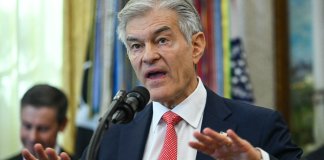The U.S. does not have a big enough power grid to accommodate rising energy demand — a fact that’s making electricity less affordable and reliable nationwide.
But there’s broad public support for growing the grid and allowing more electricity, including cheap, clean energy, to come online.
So says a new survey of likely voters in Ohio and Pennsylvania — two states in the severely backlogged PJM Interconnection grid region — and Arkansas, Mississippi, and Missouri, which are covered by the Midcontinent Independent System Operator (MISO). The survey was conducted by polling firm Cygnal on behalf of the Conservative Energy Network.
Roughly three-fourths of likely voters support expanding the electric grid, the survey found. About two-thirds are in favor of adding more transmission lines to connect clean energy and strengthen grid reliability.
And nearly 90% of respondents are concerned about rising energy costs. A majority of surveyed Republicans, Democrats, and Independents said they are “very concerned.”
“This is not a partisan issue. … You don’t have to appeal to one side or another,” said Chris Lane, a senior partner at Cygnal, who previewed the findings at the National Conservative Energy Summit in Cleveland on Aug. 25.
He noted that the results stand out for their consistency between regions and among different groups — including political parties. Even so, the Trump administration has in recent months worked against grid expansion, not toward it.
Adding more “lanes” to the grid
Energy costs are climbing in part because of rising power demand from data centers and the electrification of buildings and vehicles. Bringing more electricity generation online — especially quick-to-build, low-cost wind and solar — could increase competition and lower prices under the basic principles of supply and demand.
But just as transportation planners need to make sure highways can handle increased road traffic, the Federal Energy Regulatory Commission and regional transmission operators need to make sure the grid has room for more electrons. That calls for more “lanes” in the form of added transmission lines, plus technologies to squeeze more capacity out of the system overall.
Currently, “there aren’t enough power lines, they’re not all in the right places, and the ones we have are too outdated to meet the rising power demand for electricity,” Evelyn Robinson, director of PJM affairs for the renewable-energy industry group MAREC Action, said during a separate panel at the conference in Cleveland.
While all of the United States faces delays in getting new energy onto the grid, the problem is worst in the PJM region, where hundreds of projects have been stalled in the queue for years. To deal with the backlog, the grid operator switched to a new interconnection process in 2023; as of June, PJM still had about 63 gigawatts of power, mostly clean energy, stuck in that “transition queue.”
Across the country, wind, solar, and battery storage make up most of the resources waiting to come online, and their “levelized cost of energy” is cheaper or on par with other electricity sources.
Great Job Kathiann M. Kowalski & the Team @ Canary Media Source link for sharing this story.





